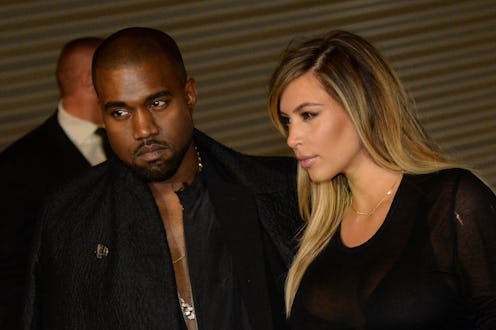Entertainment
How Did 'Time's 100 List Do On Diversity?
So Time's big list is finally out! And by big list, I mean the 100 Most Influential People in the World, of course. As you've probably already heard, Kanye West was named the top influential person, a title he likely agrees with (and he probably will not be afraid to say it either!). Love him or hate him, it is undeniable that it is good to see some diversity in the top sections of list. But something readers might be wondering is how the magazine's list fared in terms of diversity and representation of a variety of people on the list overall. As it turns out, it did pretty well (relatively speaking)!
I found that of the 100 people recognized in the list, 46 of them were people of color and 40 were women, after I did a count-by-count mini investigation of the list and the subcategories. It is worth noting that some of these figures, such as Pope Francis, have had their ethnicity debated and have not flat-out said they are a person of color, so that is why they may not be included (and Pope Francis was not, for the purposes of my statistics).
But in any case, keeping in mind that people of color and women have historically had a difficult time getting proper recognition for their influence, this is nice to see. However, there is always room for improvement in this realm of representation, and this can especially be seen when looking at the round-up of subcategories on the list.
For example, check out the statistic on the "leaders" subcategory. Only eight out of the 31 leaders are women. The list includes mostly recognizable names, like German Chancellor Angela Merkel and U.S. presidential candidate Hillary Rodham Clinton. Part of me can't help but feel that there must be some female leaders' names missing. Of course, the small number of female leaders on the list likely has much to do with the fact that men tend to be the top position-holders in national leadership roles. But the "leaders" category is not limited to these figureheads in political office. After all, Jorge Ramos made the cut for "leaders," and he's a news anchor. Why not include more women of a similar status?
Also, the statistic on the "icons" category is worth examining. Out of 12, only four of those considered icons are people of color. The icon list includes names like Nobel Peace Prize winner Malala Yousafzai, who is undoubtedly worth a mention for her brave work in fighting for the right of education. That being said, surely there are other people of color who have made similar strides. And even if they haven't won the Nobel Peace Prize, that doesn't mean they shouldn't qualify. After all, Taylor Swift and Ina Garten made the cut for the icons list.
Another takeaway worth keeping in mind is that just because a name is on this list, it does not mean they are portrayed in an overwhelmingly positive light. After all, people can influence without it being a positive thing and I can't imagine another list where some of the people listed (regardless of race or gender) would willingly be included in a round up with Kim Jong Un, for instance. But for many of these women and people of color who were mentioned in the list (such as Yousafzai), it is a wonderful thing to be recognized for their accomplishments and their efforts to make the world a better place. It is a sign of hope that we are truly moving forward as a society.
And congratulations to all, regardless of race and gender, who do strive to change the world for the better.
Images: Getty Images
